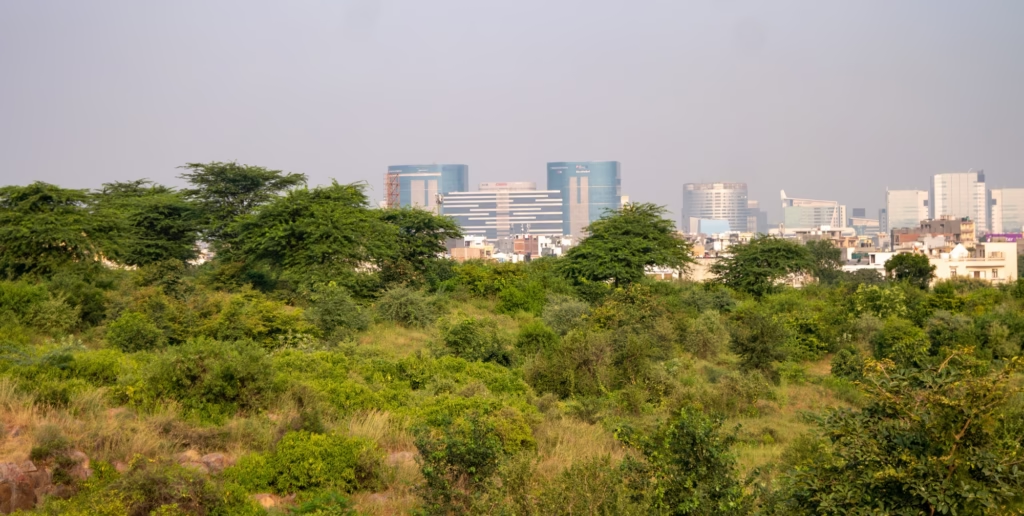Bangalore, often referred to as the IT capital of India, presents a contrasting but equally vibrant landscape for web technology. The city’s roots in technology extend back to the establishment of software companies and IT services. Today, Bangalore is home to major tech giants like Wipro and Flipkart, as well as a dynamic startup scene that attracts substantial investment. This city is characterized by its robust ecosystem, which includes co-working spaces, incubators, and accelerators that support new ventures. The abundance of tech talent in Bangalore underscores its appeal as a destination for web technology development; however, challenges such as the capacity of infrastructure and rising operational costs can limit the potential for further growth.
Both New Delhi and Bangalore possess distinct strengths and weaknesses when it comes to the current landscape of web technology. While New Delhi benefits from strong governmental support and a diverse talent pool, Bangalore’s established footprint in the tech industry allows it to take a leading role in innovation. As web technology continues to advance, these cities will play prominent roles in shaping the digital future of India. The competition between the two will ultimately drive further improvements in technology adoption and resource allocation in both regions.
Predicted Trends in Web Technology for 2025
As we look towards 2025, several key innovations and trends in web technology are anticipated to reshape the digital landscape. Among these, artificial intelligence (AI) is poised to play a crucial role, allowing businesses in cities like New Delhi and Bangalore to enhance user experiences and automate processes. The integration of AI in web applications promises to improve functionality and personalization, enabling companies to provide tailored services to their clients.
Another significant development is the rise of progressive web apps (PWAs). These hybrid applications provide users with an app-like experience directly through their browsers, eliminating the need for downloads from app stores. PWAs are expected to gain traction in both New Delhi and Bangalore due to their ability to function efficiently on a wide range of devices with varying internet speeds. Their fast loading times and offline capabilities will become increasingly important as more users access the web through mobile devices.
Security advancements will also be a focus area, given the growing concern over data breaches and cyber threats. Enhanced encryption methods and frameworks for secure data transmission are expected to gain prominence. This is critical as organizations in New Delhi and Bangalore continue to shift towards digital platforms, necessitating robust security measures to protect sensitive information.
Furthermore, the shift towards microservices architecture is predicted to redefine how web applications are built and maintained. This modular approach allows for the development of applications as a collection of loosely coupled services, facilitating easier updates and scalability. Companies in New Delhi and Bangalore that embrace this architecture will likely experience improved operational efficiency and faster deployment of new features.
Overall, the convergence of these trends—artificial intelligence, progressive web apps, enhanced security protocols, and microservices architecture—will transform the web technology landscape in 2025. Businesses in both New Delhi and Bangalore are uniquely positioned to leverage these advancements, fostering a competitive edge that will define their digital journeys moving forward.
Comparative Analysis: Advantages and Challenges for Each City
When assessing the landscape of web technology in India, New Delhi and Bangalore emerge as two prominent cities, each exhibiting distinct advantages and challenges. Bangalore, often referred to as the Silicon Valley of India, is renowned for its vibrant startup ecosystem. The city hosts numerous tech incubators and accelerators, fostering innovation and collaboration among entrepreneurs. The presence of major tech firms and venture capitalists further enhances its reputation as a favorable location for investment in web technology. Additionally, Bangalore’s relatively lower cost of living compared to other global tech hubs allows for greater financial flexibility for startups.
On the other hand, New Delhi boasts the advantage of being the political and administrative capital of India, attracting a plethora of government initiatives aimed at boosting the web technology sector. These initiatives often foster a conducive environment for businesses to grow—especially in terms of infrastructure development. Additionally, New Delhi benefits from its diverse pool of talent, as it is home to numerous prestigious universities and research institutions. This academic synergy creates opportunities for collaborations that can drive technological innovation.
However, both cities face unique challenges in their pursuit of web technology advancement. Bangalore is often criticized for its inadequate infrastructure, which can hinder the seamless operation of tech companies. Traffic congestion and limited public transportation options may also affect the quality of life for professionals. Conversely, New Delhi grapples with bureaucratic hurdles that can slow down the implementation of new projects and initiatives. Furthermore, although it has a rich talent pool, the competition for skilled professionals is intense, leading to potential talent scarcity in critical areas of web development.
Ultimately, both New Delhi and Bangalore have their own strengths and weaknesses in the realm of web technology. While Bangalore shines in fostering a robust startup culture, New Delhi leverages its administrative resources to create opportunities for growth. The future of web technology in these cities will depend on how well they overcome their respective challenges while maximizing their unique advantages.
Future Outlook: Ecosystem Development and Policy Implications
As we look towards 2025, the web technology ecosystems in New Delhi and Bangalore are poised for significant evolution. Both cities, recognized as pivotal hubs for technology in India, will need to navigate evolving market dynamics, socio-economic shifts, and changes in global technology landscapes. The role of government policy will be crucial in shaping these ecosystems, as proactive measures can attract investment, foster innovation, and unleash the full potential of web technology.
In Bangalore, known as the Silicon Valley of India, there are already several governmental initiatives promoting technology start-ups and facilitating access to funding. Programs such as the Karnataka Start-up Policy aim to create a nurturing environment for new businesses and encourage collaboration among educational institutions, private sector companies, and governmental bodies. This multifaceted approach facilitates a vibrant tech ecosystem that can accelerate advancements in web technology.
Meanwhile, in New Delhi, the government’s emphasis on ‘Digital India’ initiatives aims to strengthen digital infrastructure and enhance internet accessibility. Policy frameworks that encourage partnerships between educational institutions and tech companies could play a significant role in increasing skill development, fostering innovation, and promoting research in web technologies. Furthermore, initiatives that stimulate investments in tech startups will be essential in driving the economic growth of the region.
The future of web technology will also depend on the collaborative efforts among various stakeholders. Companies in both New Delhi and Bangalore could benefit from forming alliances with colleges and universities to ensure that graduates possess the necessary skills pertinent to the tech industry. Additionally, non-profit organizations could play a key role by bridging the gap between technology and social impact, ensuring that advancements in web technology are accessible and beneficial to all sections of society.
As we approach 2025, both New Delhi and Bangalore are set with promising trajectories for their web technology ecosystems, contingent on effective policy implementations and sustained collaboration among stakeholders.








